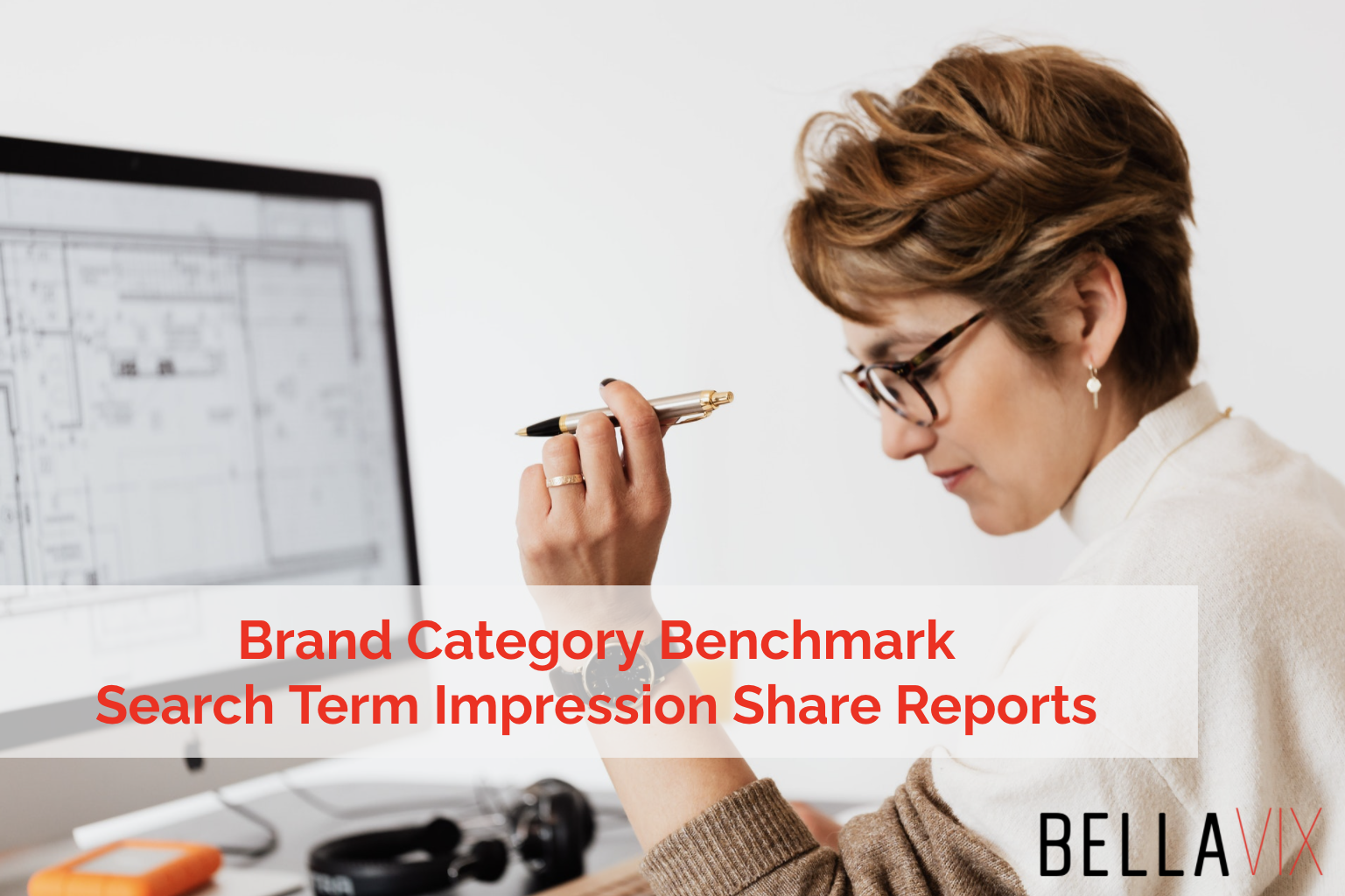Amazon Brand Category Benchmark and Search Term Impression Share Reports
We are witnessing that Amazon is continually trying to improve the advertising platform and available reports to advertisers. Amazon has introduced two new reports for Sponsored Brand ads. Brand Category Benchmark and Search Term Impression Share report. These reports are in the beta phase and not finalized but can be used in your sponsored brand strategies.
Brand Category Benchmark Reports
This report is exciting since it gives a better understanding of how other advertisers are doing and where you stand. It compares some of the most critical KPIs in the categories you are competing in:
- Impressions
- Click-Thru Rate (CTR)
- Total Advertising Cost of Sales (ACoS)
- Return on Ad Spend (ROAS)
Let’s start deconstructing the data by taking a look at the columns in the spreadsheet. From left to right, we have the start and end date of the observed period, next is the brand name, and column D is the category where your ads appear. On the image below, we have a screenshot from a report of a company that is selling vitamins and supplements.

Image 1: Screenshot BCB Report Column A to D
Next are the metrics.
Impressions
Column E gives the number of impressions we got in the specific category. As an absolute number, this metric has no real meaning to us. Is it high or low? We don’t know unless we compare to our peers. If your score falls in the 75th percentile, that means you scored better than 75% of your peers. Columns F, G, and H are our peers grouped by 25th, 50th, and 75th percentile respectfully.

Image 2: Screenshot BCB Report Column E to H, Impressions metric
In the image above, we can observe that the brand in our example is in the 75th percentile for “Health & Household” and “Vitamins & Dietary Supplements” categories and the 50th percentile for the “Sports Nutrition Products.” The first category is too broad, but the second and especially the third are of utmost importance. We are capturing over 1M impressions; we are doing better than 75% of the advertisers in that category.
Working with percentiles might feel vague initially, but it gives the right directions about industry standards and the competitive landscape.
Click-Thru Rate (CTR)

Image 3: Screenshot BCB Report Column I to L, CTR metric
Columns I through L gives us the CTR metric. In this example, in Image 3, we can see that we fall in the 25th percentile. This percentile tier means we are doing worse than 75% of the advertisers. If we relate this to the number of impressions we are getting, we are probably bidding mostly on non-relevant keywords, lowering our CTR score.
Total Advertising Cost of Sales (ACoS)

Image 4: Screenshot BCB Report Column M to P, ACoS metric
For the ACoS, from a statistical view, we are outsourcing everyone. Of course, we know that this high of an ACoS is terrible and unsustainable in the long run. But look how high it is among all of the percentiles, especially the 75th in the “Vitamins & Dietary Supplements” category. This relates to my previous point about industry standards. It shows fierce competition in this category, and most of the advertisers are suffering from high ACoS.
ROAS
Image 5: Screenshot BCB Report Column Q to T, RoAS metric
ROAS is the reverse metric of the ACoS. It has been the standard in the advertising industry, but it was introduced later by Amazon, so now it’s piggybacking to the ACoS.
Search Term Impression Share report
The second report is the Search Term Impression Share report. This report has two new metrics in column B: “Search Term Impression Rank” and column C: “Search Term Impression Share” that are entirely new. Amazon has provided minimal explanations on how to interpret these and how to use them when making decisions. Since we love to overanalyze data, we tackle this, and here are our findings:
Let’s start by defining meaning. Search term impression rank provides account-level ad-attributed impression rank for search terms. What this means is that the ranking of Customer Search Terms is unique to your account. The importance assigned by the algorithm is only relevant to you.
Search Term Impression Share is an account-wide ad impression count for each search term and the overall percentage of ad impressions you receive compared to other advertisers. The most important takeaway here is that you can use Impression Share to understand whether your ads might reach more people if you increase your bid or budget.
To get a better grasp of this, let us go through an example:

Image 6: Example of STIS report
In this example, we have keywords ranked number 1, with different impression shares. We can see that we are dominating the space for the most by having a 100% impression share, but there few that we should consider increasing the bids, especially the one in row 11, for which we have a 37.26% impression share. It looks like there is a great opportunity here. Before we rush in and skyrocket the bids, we should consider the other metrics like the number of clicks, spend, sales, ACoS/RoAS. If they have aligned with the account’s overall objectives in terms of efficiency, we can experiment by increasing the bids or changing the match type.
Every new piece of data is essential to improve the success of advertising efforts. We can hope that Amazon will keep and expand these reports to the other types of ads that it is providing.
If you need a reliable partner for your growth on Amazon on your Amazon journey to success, get in touch with the Bellavix Team
Keep up with the latest Amazon and Walmart news updates and subscribe to our BellaVix newsletter 👇👇👇



